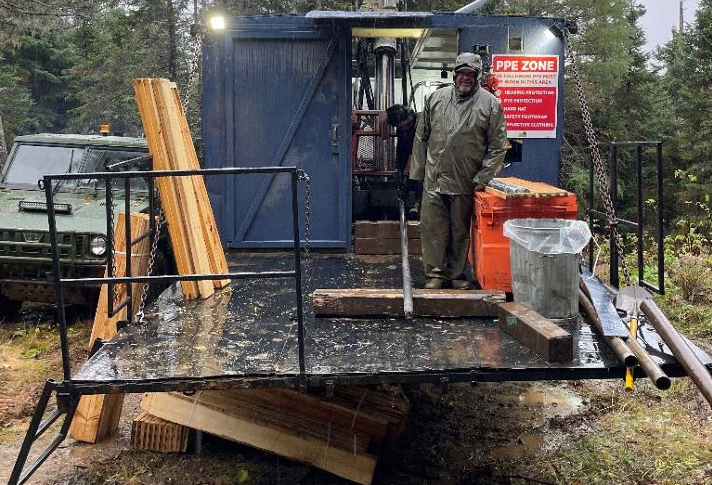TORONTO –
Marathon Gold is on track to release a new resource estimate in September for its Leprechaun deposit in the company’s Valentine gold camp in Newfoundland and Labrador.
The latest drilling has expanded the high grade area within Leprechaun’s Main zone corridor to a strike length over 480 meters with a width of 30 to 100 metres and extending to a depth of 350 metres.
Leprechaun is one of four near surface deposits, mainly pit shell constrained, at Marathon’s Valentine gold camp, and remains open at depth and along strike. The four deposits stretch over a 20-km system of gold-bearing veins.
Highlights from the most recent batch of assay results from Leprechaun include drill hole 19-711, which intersected 4.24 g/t gold over 74 metres, including 9.01 g/t gold over 2 meters, 35.54 g/t over 4 metres, 10.78 g/t over 3 metres and 17.10 g/t over 3 meters, as well as 6.94 g/t gold over 24 metres including 18.47 g/t over 4 metres and 20.35 g/t over 3 metres.
Other notable results were drill hole 19-715, which returned 2.62 g/t gold over 31 meters, including 8.11 g/t gold over 2 metres, 13.79 g/t over 2 metres and 5.36 g/t over 2 meters, as well as 1.03 g/t gold over 15 meters near surface. Drill hole 19-703 cut 10.03 g/t gold over 19 metres, and drill hole 19-710 assayed 1.93 g/t over 53 metres.
Drill results from Leprechaun, released early in June, include 2.41 g/t gold over 98 metres in drill hole 19-695, 5.45 g/t over 36 meters in 19-697, and 3.96 g/t over 28 meters in drill hole 19-693.
The company estimates that it has explored only 15% of the property and that over eight years of exploration it has recorded an average finding cost of $10 per ounce.
The majority of the resources at Valentine Lake occur in the Marathon and Leprechaun deposits, which also have resources below the pit shell. Like Leprechaun, the Marathon deposit is open at depth and on strike, but Marathon has been traced down to a kilometre depth.
The project has total measured and indicated resources of 45.15 million tonnes grading 1.85 g/t gold for 2.69 million contained oz. of gold and inferred resources of 26.86 million tonnes grading 1.77 g/t gold for 1.53 million contained oz.
Of the measured and indicated, 44.34 million tonnes are classified as open pit resources, and of the inferred resources, 24.43 million tonnes are designated as open pit.
Metallurgical tests have demonstrated 93% to 98% recoveries via conventional milling and an average of 65% to 72% extraction rates for 23-mm material through lower cost heap leaching at the Marathon and Leprechaun deposits.
John Sclodnick of National Bank of Canada, has a target price of $1.90 per share and writes in a research note that Marathon Gold “should be trading at peak valuations within our developer coverage given its proven ability to grow the resource, the relatively high grade open pit project in a desirable jurisdiction and our view of the stock as a prime takeout candidate for an intermediate producer.”
Haywood Securities mining analyst Mick Carew has a $2 price target on the stock, commenting in a note to clients that the company “is well positioned when market conditions improve and M&A activity moves downstream to resource/economic study stage projects.”
This story first appeared on www.NorthernMiner.com.





Comments